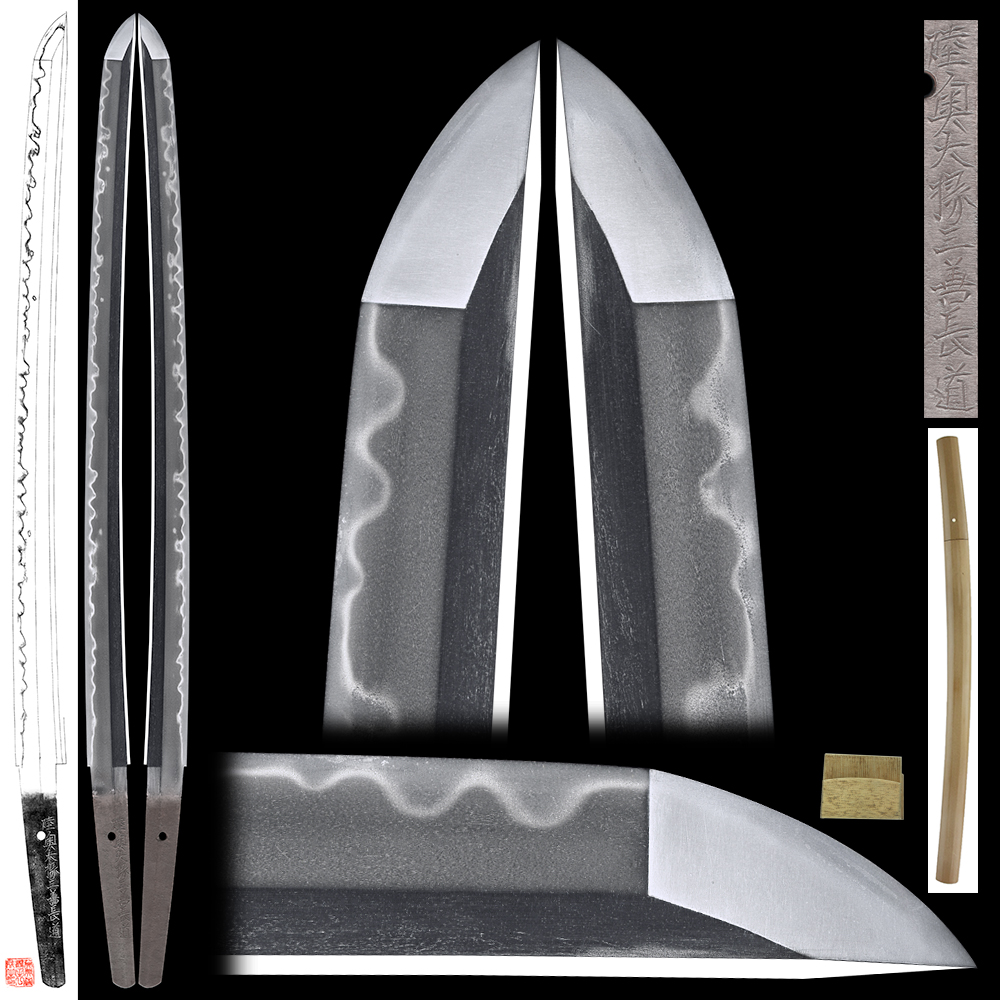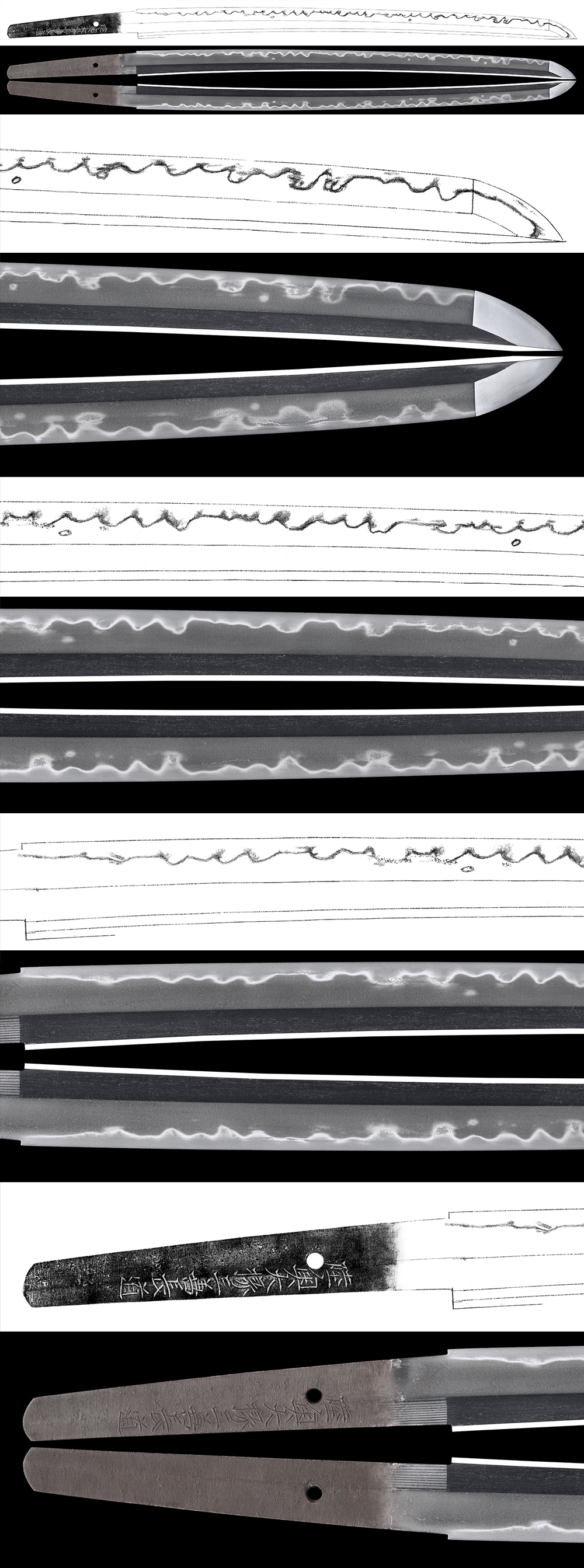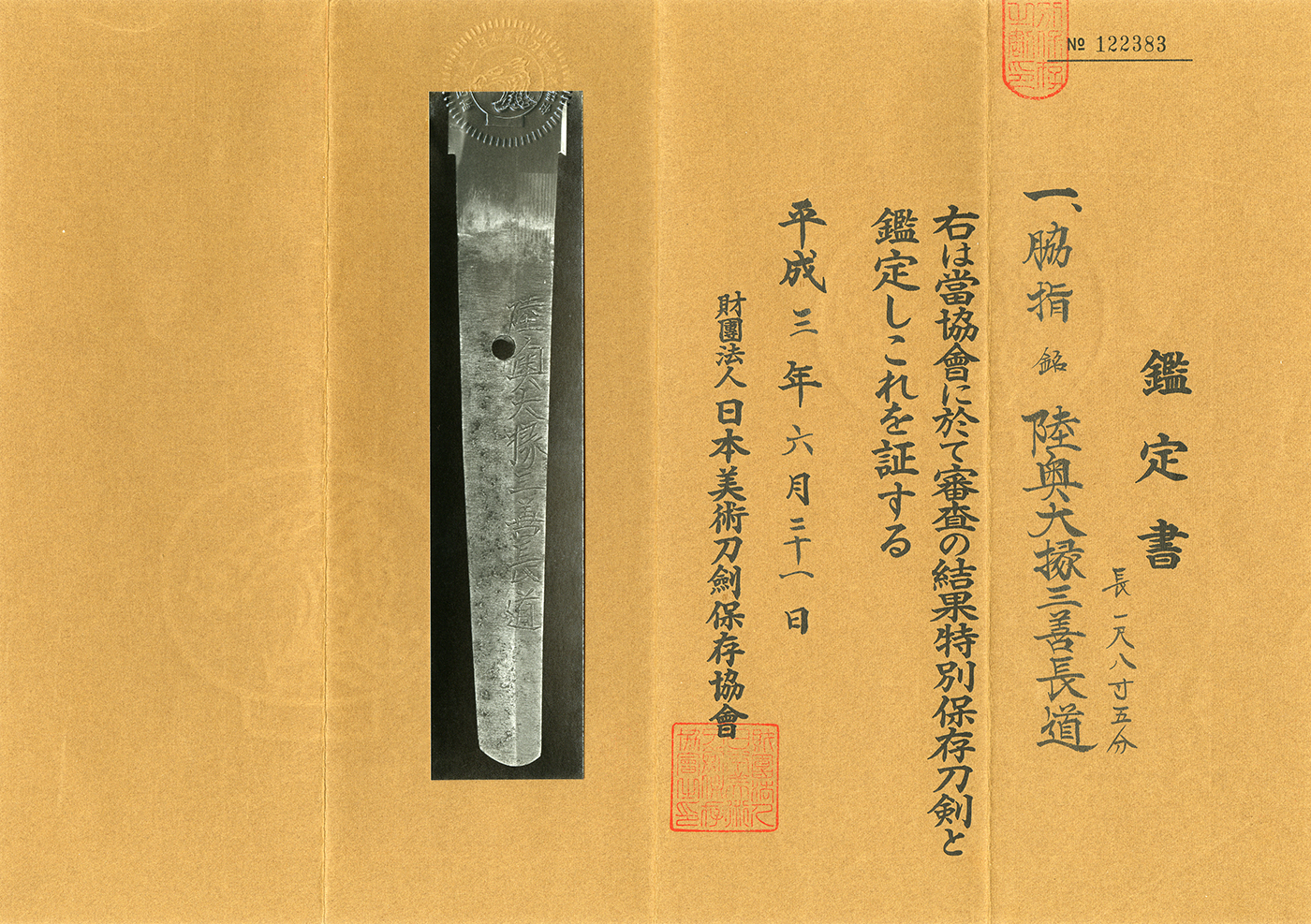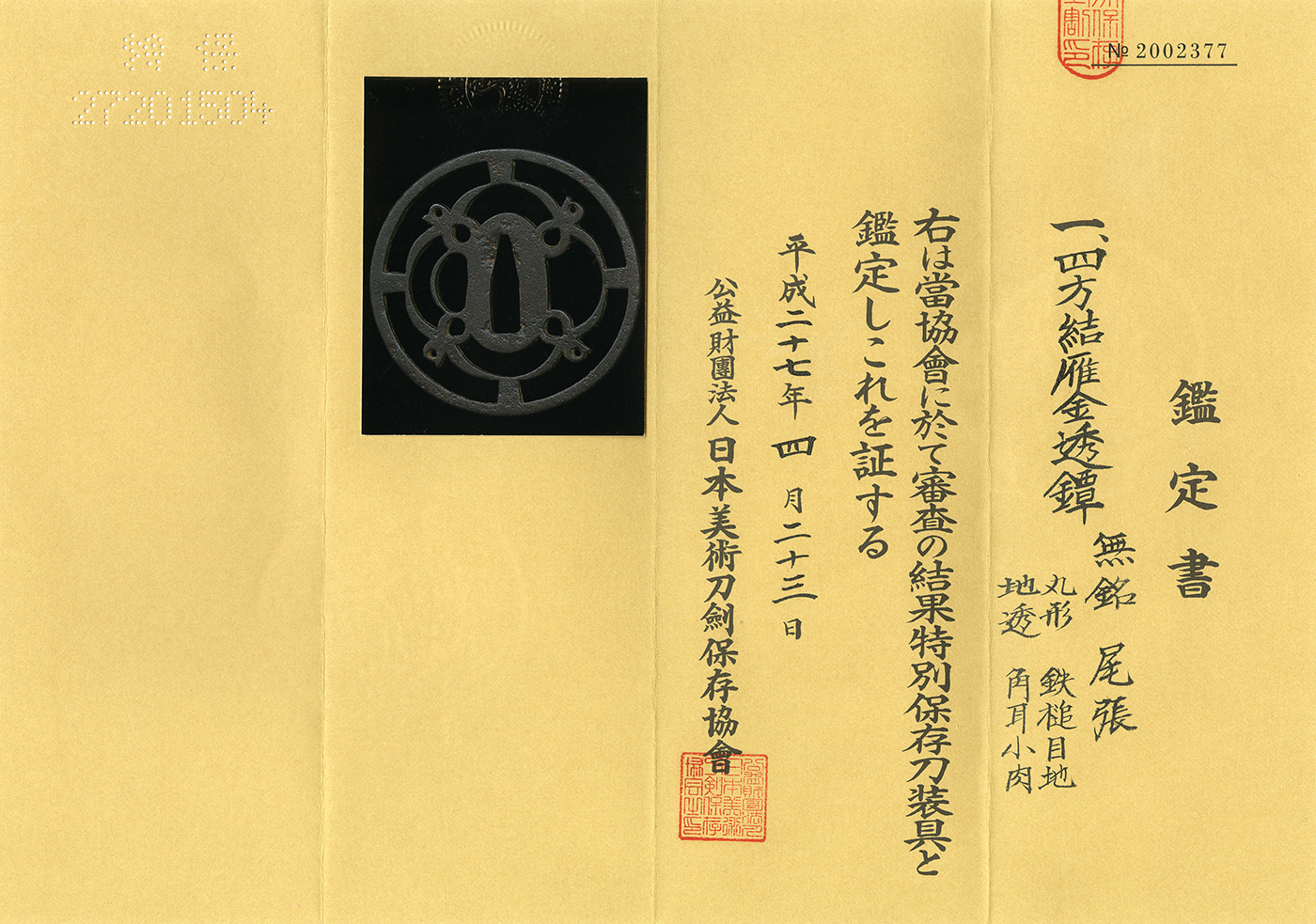Wakizashi: Mutsu Daijyo Miyoshi Nagamichi (first generation)
2017/01/05
Wakizashi in Shirasaya with Koshirae.(NBTHK Tokubetsu Hozon paper)
(Tsuba: NBTHK Hozon paper)
Signature : Mutsu Daijyo Miyoshi Nagamichi (first generation)
Shinto:Jyo-saku ranking: Saijyo Oowazamono cutting test ranking:Iwashiro
The most cut well sword in Shinto sword makers.
(We divide 4 sections for each sword as Saijyo saku, Jyojyo saku Jyo saku and regular saku)
This Mutsu Daijyo Miyoshi Nagamichi belongs to Jyo-jyo saku ranking.
The blade was polished by good polisher.
Habaki :Gold foiled double habaki.
Blade length : 56.06 cm or 22.07 inches.
Sori : 0.76 cm or 0.29 inches.
Mekugi : 1
Width at the hamachi : 3.10 cm or 1.22 inches.
Width at the Kissaki : 2.21 cm or 0.87 inches.
Kasane : 0.66 cm or 0.25 inches.
Era : Shinto Kanbun era.
Shape : The blade is wide and thick with good meat(healthy) with long kisaaki nice looking shape.
Jigane :Itame hada well grained with jinie attach and visible to see the texture.
Hamon :Niedeki suguha from the Hamachi area and then gunome midare hamon bright and clear.
Boshi is notere and round shape like Kotetsu.
Special feature:Miyoshi Nagamichi, born Miyoshi Toshiro lived at Matsuyama in Iyo province is a grondson of Nagakuni. Nagakuni was a retained swordsmith of Kato Yoshiaki. Nagakuni and his son Masanaga, the father of Nagamichi went along with the Kato family when they moved to Aizu in O-shu province in 1627. Nagamichi was born in 1633 who was called Michinaga in his youth. Accepting Mutsu-Daijo in 1659, he changed the name to Nagamichi. Mr. Asaemon Yamada, known as a famous cutting tester ranked Nagamitsu Saijo-Owaza-mono in his book as one of twelve excellent swordsmiths at the point of sharpness. Quite a few swords forged by Nagamichi survive with the result of cutting test.
Nagamichi the First passed away in 1685, aged 53.
The workmanship of this katana shows a strong resemblance
to Kotetsu who is a representative swordsmith of Edo-shinto.
Koshirae :
Saya :Shark skin.
Tsuba :On the roud shape iron tsuba arigane(wild goose) design engraved in openwork.
Mumei(Owari): NBTHK Hozon paper
Higo style Edo period.
Menuki : On the syakudo plate, flower design is engraved.
NBTHK Tokubetsu Hozon paper for the blade.
NBTHK Hozon paper for the Tsuba
Aoi Art estimation paper : whole Oshigata.






